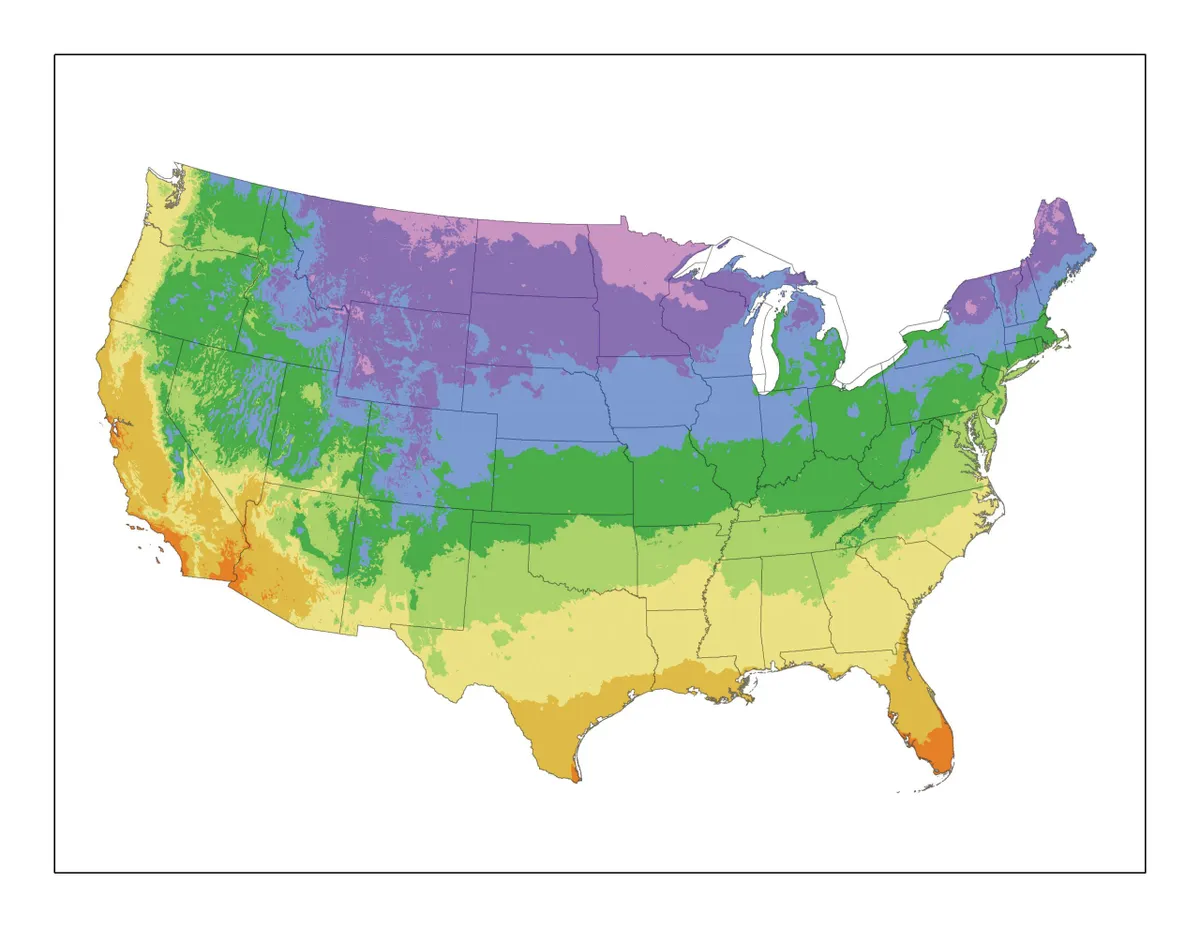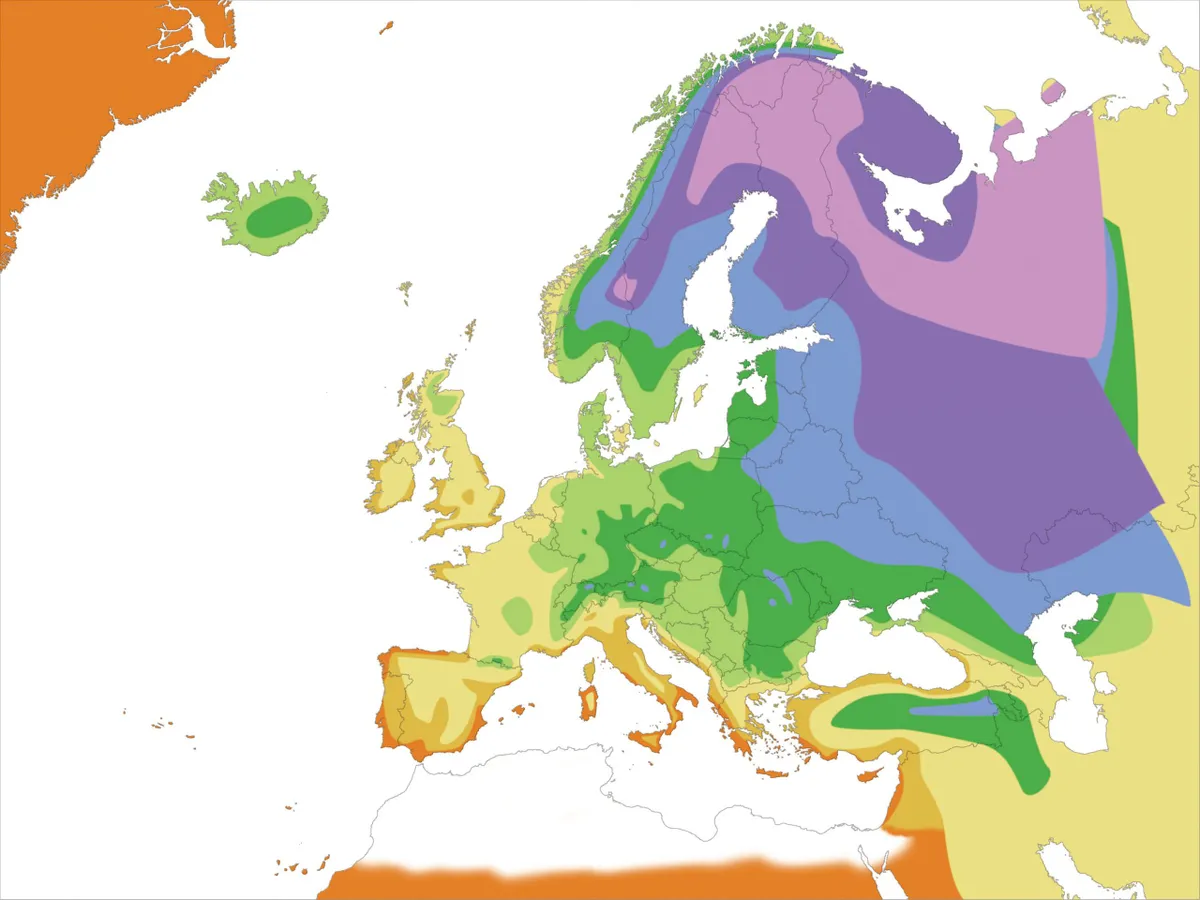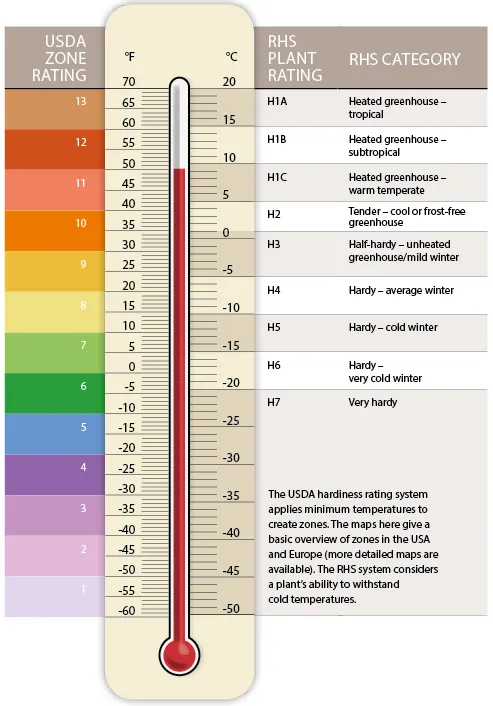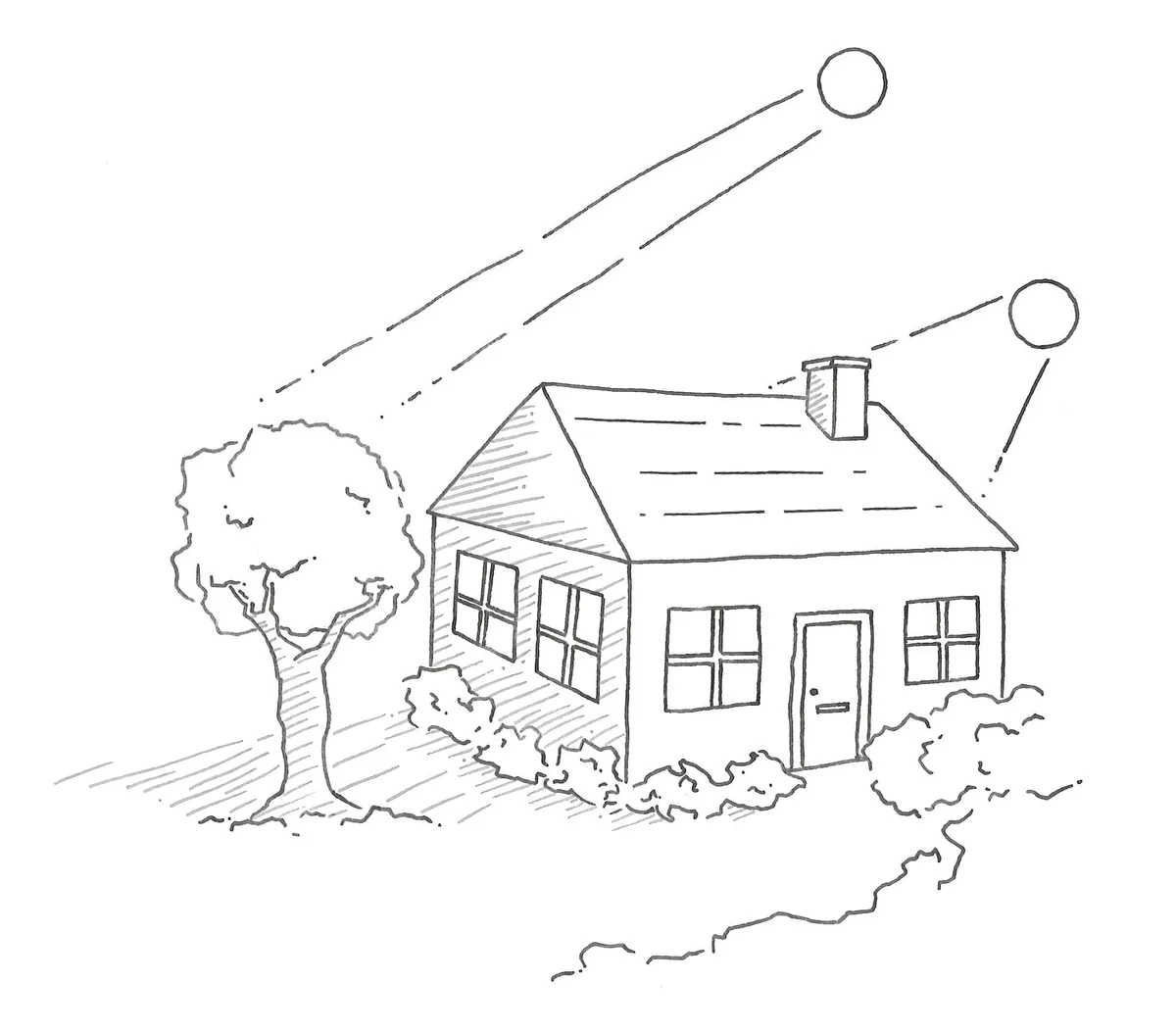When we buy a plant, there’s always the temptation to make an impulse purchase. Yet the first question that should pop into a gardener’s head is ‘will it actually thrive in my garden?’
In a climate as varied as the British Isles, one of the main factors used to work this out is whether it can survive the winter outdoors unaided – what we call ‘hardiness’.
Throughout Gardens Illustrated there are references to a plant’s hardiness described using two separate scales: one from the Royal Horticultural Society (RHS) and the other from the United States Department of Agriculture (USDA). Both are based on accumulated experience of a plant’s ability to endure cold conditions, or in the UK, the ability to withstand changeable periods of freezing and relatively mild, wet weather. Plants adapt to tolerate cold to varying degrees. Some will take a light frost (temperatures just below freezing) for a couple of hours, others cope with long periods of freezing to remarkably low temperatures.
Plant hardiness zones USA
The USDA scale was developed in the 1960s for North America but it is now widely used in other countries around the world. It’s based on minimum average temperatures in a range of zones – as shown in the two illustrations – which increase in steps of 10°F. The US zones have been mapped in remarkable detail and plants can be assigned a rating according to the coldest zone in which they can grow or, as we have done here, a range of zones in which the plant is known to grow. These range from 1 (very hardy) to 13 (least hardy), with each divided into two 5°F subzones ‘a’ and ‘b’. This USDA system has been applied to the UK and Europe and gardeners here can use the mapped zones as a general guide.

Plant hardiness zones UK
The RHS scale, introduced in 2012, is a more descriptive system of hardiness ratings. Like the USDA system, it uses a scale (this time in 5°C steps) from H1 to H7, based on minimum winter temperatures. However, it has two major differences. The first is that it runs in the opposite direction to the USDA system – 1 is very tender, 7 is very hardy. It also offers a description for the garden conditions to help reflect the variable nature of UK winters. These are summarised in the scale below, but you can find more detailed descriptions on the RHS website. The most tender rating, H1, has been subdivided into three categories A, B and C.
Perhaps, though, the more important difference is that the RHS scale is a rating of the plant’s hardiness and hasn’t been translated into mapped zones for the UK.
All rating given in the magazine are accurate to the best of our knowledge. Not every plant has been given a rating by the RHS, but where none is available our contributors will sometimes rate the plant based on their own trials. USDA scales are taken from the website of the Missouri Botanical Garden or based on growers’ experiences in the USA. Both are included as a guide only to help you predict what you should be able to grow in your garden.

USDA and RHS scale (US and UK systems)

A little bit more on microclimate

For those keen to grow tender plants, a south-facing aspect is desirable to maximise exposure to the sun’s heat. Likewise, shelter is critical, either to protect plants from cold winds or from cold air flowing down hillsides.
Gardeners will talk about frost pockets or frost hollows. These are where cold air drains off exposed slopes, as cold air is heavier than warm air, and collects in valleys or in sheltered areas where it cannot escape. This leads to cooler overnight temperatures and more frosts.
Where possible, lay out your garden to avoid slowing or trapping cold as it filters down slopes. Hedges, fences and walls can be strategically placed to protect plants or to provide sheltered nooks where you can grow plants that would not flourish in the open. Walls provide an additional benefit because they absorb heat during the day, which they then give off again at night. Cleverly, this keeps the surrounding air several degrees warmer, which can make all the difference to your plants on a frosty day.
Bear in mind, though, that structures such as walls, fences and hedges also cast shadow. This can mean that after an overnight frost, even though the daytime temperature rises above freezing, the ground remains frozen when in permanent shade.
Useful Information
RHS hardiness ratings rhs.org.uk
USDA hardiness maps planthardiness.ars.usda.gov